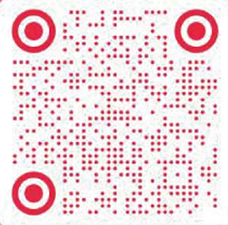Who are we? Where are we from? Where are we going? For no time, the ultimate pondering on the ontology of human beings stops wandering in the minds of humans. Only knowing the historical location and dimension does human existence make sense. Similarly, the thinking of art is closely related with its era and question awareness.
The words “artistic works go with time” does not refer to art’s complying with time; but, penetrating the appearance, artistic works reflect the problems of their era.. Thus, art must be perceived historically. Now, modernity is right in the stage of rethinking. This is the question basis of all questions, without which, the question is not the question of contemporaneity and without which, the art is not contemporary art.
The contemporaneity of contemporary art is exactly the question of modernity. Contemporaneity is a simple concept arising with time, without clear ideological orientation, but modernity shall be realest historical existence and question awareness currently. Both modernism and post-modernism are the questions of modernity. Contemporary art is the same, which, with modern art, are two ways dealing with the question of modernity. First dabbling contemporary art, more attention would be paid on its difference with modern art to form the methodology of contemporary art. However, contemporary art, as a method, would undoubtedly weaken or even ignore the value orientation of art concepts, further, to ignore the modernity question of contemporary. Thus, at this moment of rethink contemporary art, more emphasis should be put on its feature in common with modern art—the question of modernity.
Wang Xiaojie’s paintings have expressed this question effectively. He gradually makes a explicit perception of his own art concepts and style.
As an outstanding graduate who has been left teaching in the institute of painting in Tianjin Academy of Fine Arts after graduation, Wang Xiaojie took part in the Internal Youth Art Exhibition, and his graduate work, DUSK, was published on the front cover of the magazine, ART. He has realized instinctively in the middle of 1980s that oil painting should surpass the problem of languages, nationalization and localization to confront the existential anxiety of modern human. Chinese painting had long been instrumentalized by totalitarianism, restricted by the rigescent thinking, watching and expressing system of the painting of Soviet Union. Thus, re-studying the artistic expressions of the real European paintings became an important task in early 1980s. However, no matter at the frontier of world art history or the invading of western modernism in China, both of them expressed an era of reform and innovation. Today, not yesterday. Modernism has penetrated all the sight and thinking, then and there. No one can ignore it.
Time files. In the hush and chaotic crashes and with experiences, a new page opened—the nineteen eighties ended. Suddenly, a consumption society swallowed all the enthusiasm towards humanity and the inquiring of truth. Modernity became the pariah of post-modernism in a sudden. It was so quick that most artists had no time to think. Dazed, they stayed silent or drifted along. The series of STRUCTURES recorded the modern art pursuit of Wang Xiaojie. Quickly, he accepted the world of more modernity, in which he brought forward the thinking of anti-modernity. In moment, he felt eternity, as what he said, “My inspiration comes from a piece of fossil. When the vivid figures overlap with the fresh real world, a though came into my mind –moment is eternity. I want to find the incorruptible in the corrupted.” Out of the window, everything is vigorous. Yet, Wang Xiaojie has glimpsed its nature of corruption. Wang Xiaojie realized the function of time when the fossil touched his soul. In front of time, all prosperity went to earth and dust. All he saw was the short process of life. In the weathering of matter, he saw “various lives and changing things bared their soul in the process of life”.
The complete meaning of modernity is perceived thoroughly here, as the famous illustration of Charles Pierre Baudelaire in Le Peintre de la vie moderne, “modernity is transition, moment and accident, which is one half of art. The other half is eternity and invariability.” Take Paul Cezanne, the father of modern art, as an example. On one hand, he expressed strong personal features in art; on the other hand, he pursued the artistic conception of classical art firmly. However, to most people, modern society is full of momentary quick flashing and euphoria. Eternity is invisible.
In this new context, Wang Xiaojie’s perceiving of modern society had become totally different from that during the enlightenment period in 1980s. He did not indulge himself to embrace this lustrous and dazzling world. In a soul gradually filled with faiths, the cynic and kitsch can save the original sin of modernity, only to deepen its alienation. Among a modern city developing rapidly, the feeling of Wang Xiaojie was much stronger. All things around, including himself, were trapped in.
The complex feeling of modernity traced Wang Xiaojie’ experience of life. All romantic imagine on the languages and cultures of art disappeared. This alienated real world had become so rigorous to face with. Those instrumentalized products, such as vehicles, architectures and human beings, no longer existed for their own. They had lost their independent value absolutely. They mixed and piled up in the works of Wang Xiaojie, shouting out the reality undergoing.
Later, Wang Xiaojie left for Australia for a decade. Far abroad, it seemed he missed the most abustle and stirring domestic art market. Yet looking backward now, the barrier of distance kept him away from the habit then, but left him concentrated on study and research on his prime of life. Actually, he never drew his eye away from the alienation of reality. Especially, with the experience of modern life in developed countries, the pain of motherland was even much stronger in his heart. Various alienated scenes were painted on his works: numerous livings squeezed and crashed together, stained, broke and air-slaked. Time changed everything, as the so-called “insistently flowing is the Yangtz River eastward, heroes of centuries have been washed away. Success or failure, being right or not turn void, and still there are the green mountains, with sunsets glowing all the time.” Only the mark of life left. The mix of various alienations, not only existed in the space dimension, but also reflected the chaotic time of China mixed with pre-modernism, modernism and post-modernism. Superficially, it was multiple values; substantively, the opinions varied and conflicted. No one could draw himself away from his situation. In this case, situational survival became a basic question consciousness of art.
In the eye of Wang Xiaojie, this ruined alienated modern society was a living fossil, which laid the basic structure for his painting. All alienated reality of Wang Xiaojie was expressed on fossils. With fossils as theaters, the flowing of time was illustrated. Several years later, the current moment might be pieces of stained fossils, with marks of lives. After prosperity, ruins and relics left. It was not only NOW in Wang Xiaojie’s painting, but the imaginary of future scenes as well.
It seems like a scene of the Last Trial. All alienations would receive last judgment. The guilty go to hell while the good go to heaven. Time is the best judge and the most just law. In some degree, Wang Xiaojie is recording modern history. Although there is a saying “all history is modern history”, yet, “whether it is possible to write modern history” is still under disputes. It can only be judged by the followers. Thus, only catching sight of the invisible eternity through moment, can the meaning of historical writing, the creation of art, be highlighted. The living fossils of Wang Xiaojie, present the future now and present the value of history now through the imaginary of future.
Now, Wang Xiaojie has returned China for nearly ten years, but his artistic concept never changes. His artistic style, which did not ever comply with the trend, now received new effect under current art context. The question of modernity is not only left unsolved, but even worsened. The cynic and kitsch contemporary art creates a heap of rubbles, and becomes the accomplice of modern alienation actually. After late 1970s and early 1990s, another transition of contemporary art history comes. Wang Xiaojie, who has kept being himself, becomes more confident in his creation.
Wang Xiaojie hopes his arts can not only be a record of history and take the role of redemption as well. The scenes in the fossils are not only realistic expressions of future living fossils, but a serious rethinking of cultures. Faced with the alienation reality of modern civilization, Wang Xiaojie advocated to reflect and criticize civilization with cultures. Inevitably, modern civilization will become monoculture tyranny during the universal process. Multiple regional cultures can de-construct the structure of civilization and modify its orientation. All culture images, such as the weather-beaten fossils and ancient painted potteries, can provide Wang Xiaojie with visual support, helping him to return the original historical marks as possible during the future imaginary of modern alienation. The culture support is not a conservation from the values of modern civilization, but a necessary modification of the question of modernity.
The works of Wang Xiaojie also show a special shape of cutting in the way of watching and creating. His planarity processing of the images on the canvas is like a sectional present of this vivid world. The meaning of this unexpected way of watching, does not lie in the portray of planarity images, but lies in the feasibility analysis of art’s involvement in society. Cutting watching captures a moment of realistic alienation. It is a direct cut in real scenes, but not from a distance or sidelines. Deep cutting means the deep anatomy of modern alienation, to discover the problems of this society.
Therefore, the paintings of Wang Xiaojie own both the shape and metaphor of living fossils, and the distinctive cutting visual features and social involvement as well. Between history and future, centered on current alienating situations, he creates the pictures of this world one by one.
Various alienated scenes are sure to appear in a world discarding ultimate thinking. Here come the two questions of contemporary art: current situations and historical beliefs. Both of them are related with the question of modernity. Wang Xiaojie presents this alienated world honestly. He paints himself, he paints you, he paints him, he paints all existences and the relations of existences—alienation and anti-alienation. While painting, he is pondering the questions: who are we? And what is contemporary art?
——By Hao Qingsong











